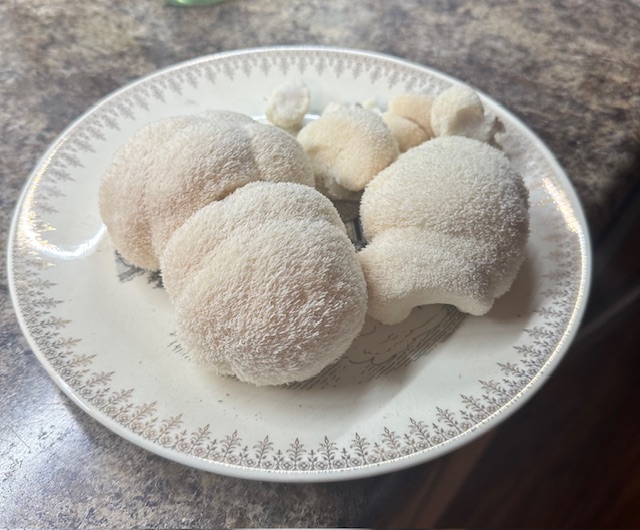
Lion’s Mane (Hericium erinaceus)
Hericium erinaceus, commonly known as Lion’s Mane, is a fuzzy-looking mushroom that grows in large, bulbous clusters. This variety is native to North America, Europe, and Asia. Lion’s Mane has a slew of nicknames, including the pom pom mushroom, the monkey’s head mushroom, and the bearded hedgehog mushroom.
Its shaggy appearance and bright white- or cream-colored flesh make Lion’s Mane a visual standout. Many home cooks are initially drawn to this mushroom because of its appearance, but they become dedicated Lion’s Mane fans after tasting its savory and slightly sweet flavor. This mushroom species has a very unique, meaty texture, and it can be served in a variety of dishes.
Spawn Run
Incubate at room temperature for 14 -21 days. Watch for water pooling in the spawn, or “sweating”.
Initiate Pinning:
Drop temperature to 15 deg C. Increase humidity to 95%. Should start to pin in less than 7 days.
Fruit Development:
Humidity at 85%. Temperature at 15-20 deg C. Grow fast, should produce harvestable fruits in 5 days or less from pinning.
Anecdotally, Lion’s Mane mushrooms have been said to have a slew of health benefits:
- Relieving symptoms of depression and/or anxiety
- Aiding in recovery from nervous system injuries
- Reducing the risk of heart disease
- Protecting against digestive ulcers
- Managing diabetes
- Reducing inflammation
Many of these effects have been observed in mice, but more research must be done on the effects of Lion’s Mane on human subjects to support these claims.
Lion’s Mane contains neurotrophic factors called hericenones and erinacines which can induce nerve growth factors essential for optimal brain function. This could mean that patients with cognitive impairments such as Alzheimer’s, dementia, MS, etc. can use Lion’s Mane mushrooms to regrow some of the nerve fibers in the brain and therefore increase their cognitive function.
YIELD:
Blue Oyster Mushrooms can achieve extremely high yields, up to 200% biological efficiency. Picking older mushrooms will improve the yield, but risks covering your grow room with spores or picking the mushroom past their prime for culinary use.
HARVEST:
Harvest the mushrooms by picking of or cutting off entire clusters.
Mushrooms will store longer if handled delicately and stored as a cluster instead of picking off individual mushrooms. Blue Oysters will store longer in the fridge than pinks or yellows.
Blue Oysters have the tendency to continue growing in the fridge, with mycelium starting to grow from the stems. This is usually undesirable. Blue Oyster mushrooms can also be dried in a dehydrator for long term storage.
WEAKNESS:
Blue Oysters have a huge spore load, more than any other mushroom.
They also have the largest fresh air requirement than any other gourmet mushroom, making it a bit of a challenge to grow large fruits indoors.
They last for a long time in the fridge but may start to grow mycelium from the stems. The stems can be chewy.
COOKING:
Blue Oyster mushrooms can be used in a variety of dishes, especially soups and pastas. The flavor is unique and delicious.
The stems can be chewy, and you may want to avoid using the stems in most dishes. Dried mushrooms can be re-hydrated in water or directly placed in soups and stews.